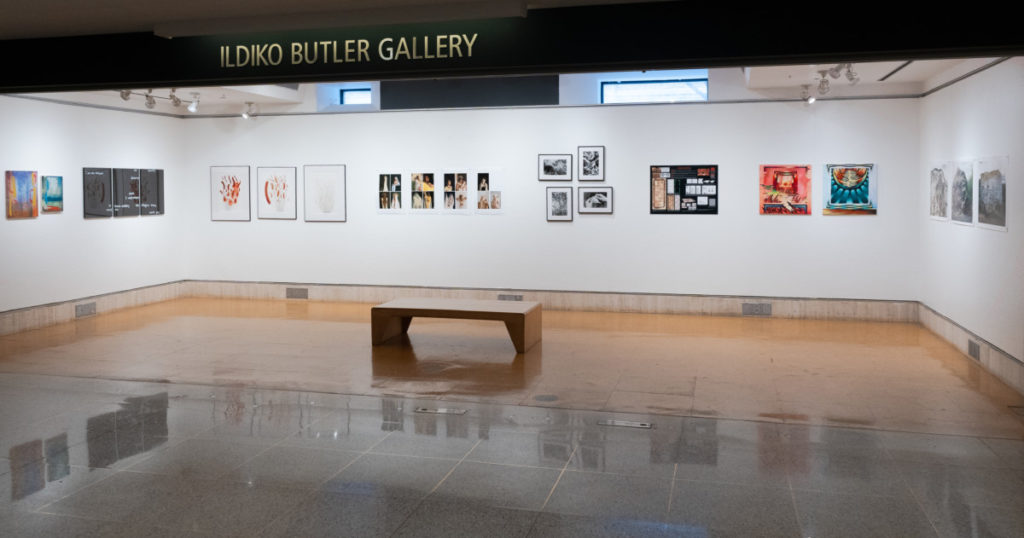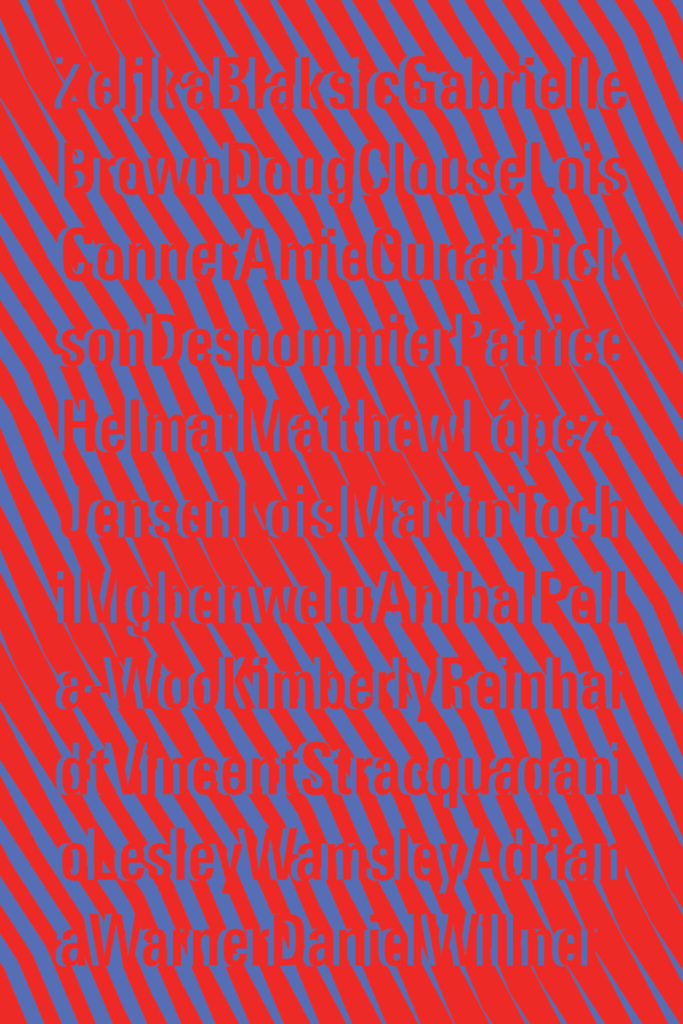New Exhibition: Adjunct Faculty Spotlight Part Two


The Department of Visual Arts at Fordham University is pleased to present the 2021 Adjunct Faculty Spotlight exhibition in the Ildiko Butler Gallery. We are fortunate to have so many exceptionally talented Adjunct Professors teaching in our department, in fact, so many that we have had to divide this exhibition into two parts.
The second installment, Adjunct Faculty Spotlight Part Two, will include a sampling of work from the following artists:
Gabe Brown, Lois Conner, Dickson Despommier, Lois Martin, Tochi Mgbenwelu, Vincent Stracquadanio, Adriana Warner, and Dan Willner
This group of artists represents a range of disciplines offered in the Visual Arts Department, including graphic design, painting, and photography. Despite the differences in their mediums, approaches, and subjects, their works are sure to generate lively dialogue.
The artists:
Gabe Brown: I seek a better understanding of truth in nature with constant comparison and evaluation of opposites. Using a visual vocabulary derived from a world that often goes unnoticed and sometimes hidden, everyday events such as conversations between birds, forces that drive water, or the cellular structure of plant life, I begin to reinvent reality. The paintings create a secret recipe for an inner landscape of the human condition; narrative vignettes that are both alluring and mysterious. Nature, and those elements existing in its microcosm become metaphors for a strange and at times super-reality, a parallel universe that questions the natural scheme of life itself.
Lois Conner: My interest in collecting rocks and stones began early. It was a way to preserve my memories, and to take part of the landscape home. As a graduate student, I learned that Chinese scholar rocks were representations of the vastness of nature that painter-scholars took back to the studio to celebrate the landscape, marvel at the universe, and inspire their own creations, both in art and in writing. Without knowing their history, this collection of large boulders in Colorado seemed whimsical, a strange wonder. When I went to photograph, the weather was uncooperatively stormy, and later, so severe that it caused mudslides and closed the nearby Independence Pass. I was momentarily held captive in this little world, mining this “world within worlds” with great abandon.
Dickson Despommier: I am a painter/photographer who spent 12 years at the Art Students League in New York studying with Mario Cooper and Dale Meyers. I am a member of the Salmagundi Club in NYC. These are representative of some of my recent watercolor paintings that I entitle Germination. I live in Fort Lee, New Jersey with my wife, Marlene Bloom, an accomplished artist who paints in oil on canvas.
Lois Martin: Throughout my working life, archaeological illustration has been a constant part of my art practice. Museums and scholars commission some pieces, to accompany exhibitions or publications; I produce others to complement my own research. I focus primarily on the arts of the ancient Americas and have a particular interest and expertise in pre-Columbian (before Columbus, pre-1492) textiles. Many of the illustrations are line drawings that can help clarify complex imagery. For instance, in 1991, I completed a full set of pen-and-ink drawings of a 2,000-year-old textile masterpiece from the South Coast of Peru for the Brooklyn Museum of Art. The Museum published drawings and my text in a brochure and continues to print them as gallery panels to help orient visitors.
Tochi Mgbenwelu: Tochi, like you, is a person navigating the world who just happens to be sharing her experiences through various means of documentation. This series, The Reigning Conglomerate, came about as a result of trying to personally answer the question, “Is God a Black Woman?”
Vincent Stracquadanio: The spaces in my work depict moments of transformation and magic. The rich patterning of these spaces is dense with visual surprise and reference. Some spaces are filled with foreboding forms such as dark fire and cloud-like mists that appear to seep through various Sicilian porticos disrupting spatial certainty. Others, archetypical forms like the “Arch” and the “Portal” line technicolor corridors that peer out into a horrific black abyss from a Giallo film. In these spaces, I’ve mined my own relationship to histories of art, family, and self. These lavish interior spaces collapse and extend using patterning and flatness that eliminates hierarchies between foreground and background, form and formlessness, clarity and confusion.
Adriana Warner: With a keen interest in letterforms and language, I use my work to articulate the realities of my existence as a Black American living in a country and under a system that continues to thrive on the oppression of non-white, particularly Black and Indigenous people. “Systems of oppression are durable and reinvent themselves” and so, I find it appropriate to call out and challenge these systems, giving special attention to harmful hypocrisies and the deadly consequences of such. In this piece, Untitled triptych, I explore ideas around clarity and accessibility as it relates to messaging about history and propaganda. Pulling from Frederick Douglass’ 1852 speech ‘What, to the slave, is the Fourth of July’, this work is a direct response to the 2020 uprising following the murders of George Floyd, Breonna Taylor, and many others.
Dan Willner: My photographs reflect a lifelong fascination with the natural world, with how we find nature and how we change it. An excerpt from an accompanying text to the photographs, Shelving Rock: There’s no wrong way to the summit — Shelving Rock is so small other mountains sidle up to look good by comparison — I’ve been coming here for years alone, married, a father — wondering always if mountains are fountains for men — why do I get to the top and still feel like I’m climbing?
For further information contact Stephan Apicella-Hitchcock.
For the Visual Arts Department Website: click here.